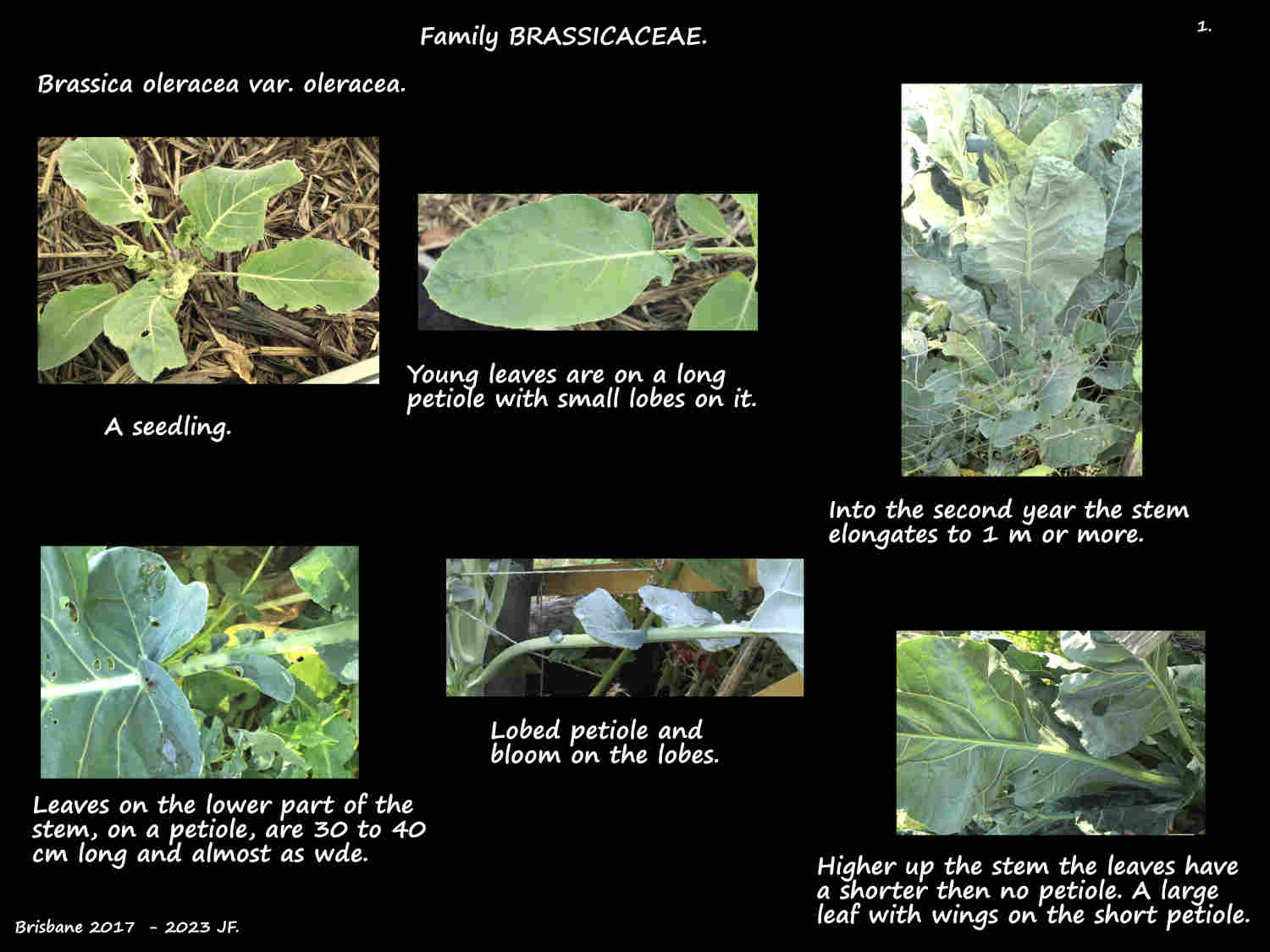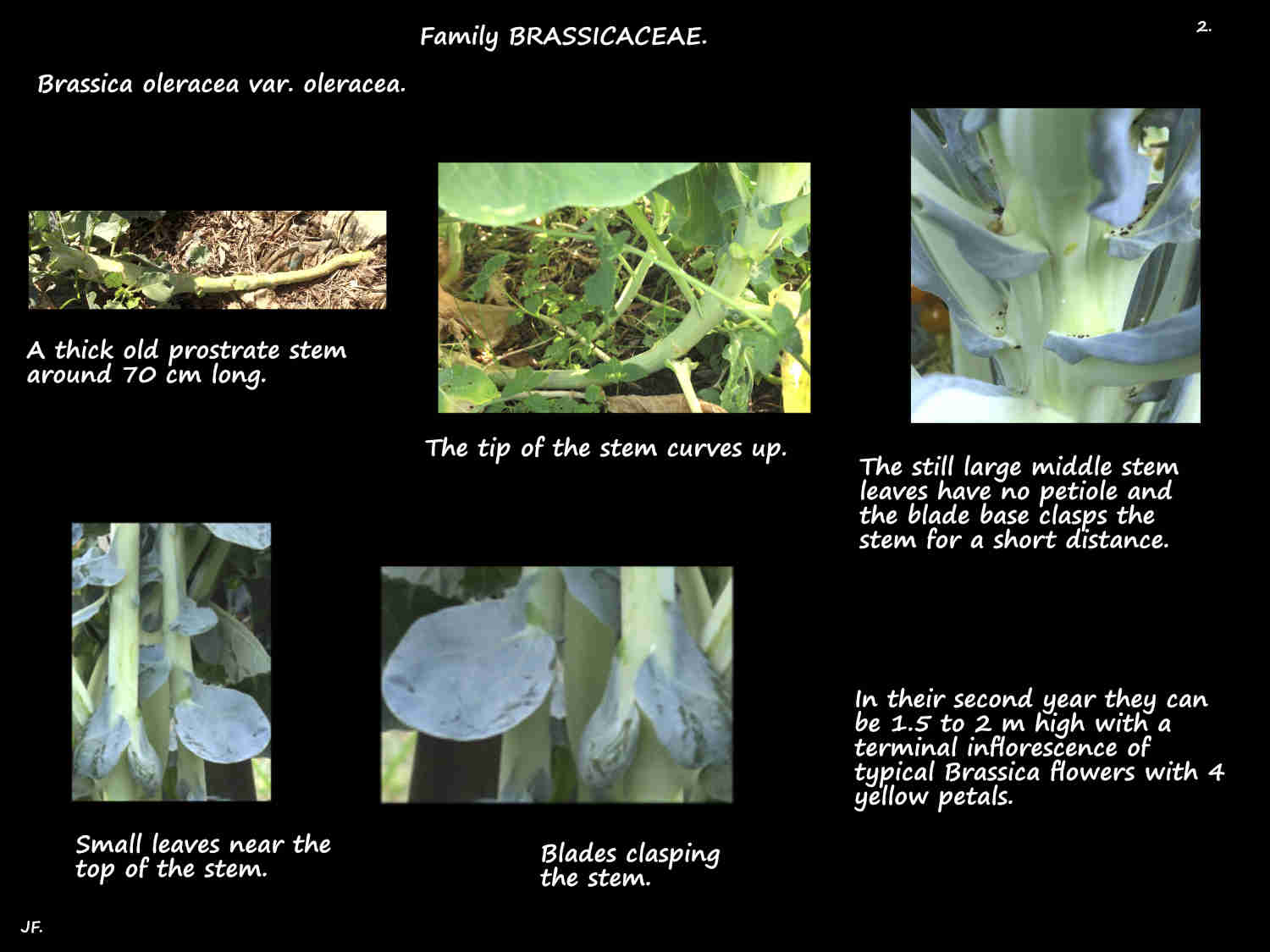Brassica oleracea. var. oleracea.
Wild cabbage, B. oleracea is a biennial plant with leaves spread along the stem with the lower ones often deeply dissected.
B. oleracea var. oleracea is the cultivated form grown as an annual and forming a dense head of leaves.
If left for a second year it forms a terminal inflorescence.
Plants have a taproot and fibrous roots.
The basal rosette has large leaves with an ovate blade and small lobes down the petiole.
The thick stem, up to around 50 cm high has scars where the leaves have fallen.
Old woody stems may lie along the ground with the tip semi-erect to erect.
The lower stem or cauline leaves, 30 to 40 cm long and almost as wide, are on a petiole.
The usually rounded blade has a sinuous or bunt toothed (crenate) edge.
Alternating leaves further up the stem have no petiole just an oblong blade.
Small lobes at the base of the blade go about one third of the way around the stem.
There may be no leaves at the top of the stem.
There are no hairs on the stems or leaves.
Inflorescences up to 1 (2) m high appear in the second year.
Each terminal spike is a raceme with flowers on a stalk or pedicel.
The raceme continues to elongate as new flowers open at the tip.
Flowers have 4 free sepals up to 1 cm long.
The 4 alternating pale yellow to white petals are up to 2 or 2.5 cm long.
The petals flare out sideways making a cross.
There are 2 short lateral stamens and opposing pairs of longer median ones.
The superior ovary, of 2 fused carpels, has 1 locule divided by a false septum.
There is 1 style and stigma.
The fruit are septifragal capsules called siliquas that split down the septum.
Up to 10 cm long and a few mms wide they have numerous seeds in each chamber.
The pedicel is up to 3 cm long and the style forms a beak up to 1 cm long.
The brown or black seeds are around 3 mm across.
*****************************
Brassica oleracea var. oleracea hybrids and cultivars are divided into 8 or so groups based on their form.
These forms are recognised as varieties and each has many cultivars.
In all there are thousands of B. oleracea cultivars.
Examples of the groups most commonly seen here are illustrated in the following pages.
Acephala cultivars do not develop a head e.g. kale.
Capitata cultivars develop a tight head of leaves – the cabbages.
Botrytis cultivars such as cauliflower have heads of dense inflorescences of aborted flowers.
Italica group is similar to the Botrytis group but the flowers are mature – common broccoli.
Gemmifera cultivars have small heads formed from the axillary leaf buds (Brussels sprouts).
Various forms of broccoli and kale appear in more than one group.
Then there are hybrids among the groups such as broccoflower and broccolini.
J.F.



